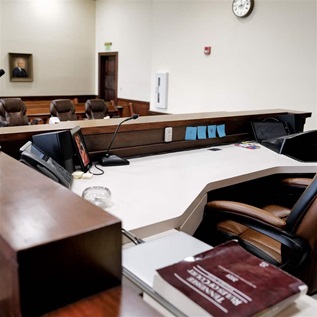Pew Study Finds Philadelphia More Competitive On Local Taxes With Its Suburban Neighbors
A new report from The Pew Charitable Trusts' Philadelphia Research Initiative finds that the city of Philadelphia is now more competitive with its Pennsylvania and New Jersey suburban neighbors when it comes to local taxes than it was a dozen years ago.
This change occurred because the residential burden—defined as the percentage of income paid in state and local income, sales and property taxes—declined somewhat in the city and rose substantially in the suburbs.
The analysis looked at Philadelphia and 236 suburban municipalities. It found that the tax burden in 2012 for middle-income Philadelphia residents, when compared to those for suburban noncommuters, was the 48th highest out of the jurisdictions studied. That is a big change from 2000, when Philadelphia placed third.
“Although Philadelphians still are more heavily taxed than most of their suburban peers, the tax gap between the city and the suburbs as a group has shrunk dramatically,” said Thomas Ginsberg, primary author of the report and project manager of the Philadelphia Research Initiative.
On average, the highest taxes in the region in 2012 were paid by residents of the Pennsylvania suburbs who commute to jobs in Philadelphia.
The report, Residential Taxes: A Narrowing Gap Between Philadelphia and its Suburbs, is based on a model developed in the 1990s by Professor Robert P. Inman of the Wharton School of the University of Pennsylvania and modified by the Philadelphia Research Initiative, with Inman's input. The purpose of the model is to compare the tax burden in the city and suburbs, for a hypothetical, home-owning family of four with a household income set at the regional median, which was about $60,000 in the most recent Census data.
While broadly indicative of the local tax burden in each jurisdiction, the report's findings may not reflect reality for many residents, especially regarding the property tax, which is the most complicated element to compare across and even within jurisdictions. Nor does the study consider non-tax factors, such as automobile insurance rates or the quality of public services, all of which figure into the decision to live in one place rather than another.
Among the study's specific findings are these:
- In Philadelphia, the hypothetical family's state-and-local tax burden declined from 13.5 percent of its income in 2000 to 12.9 percent in 2012, due mainly to property assessments that did not keep pace with rising market values and a reduction in the city's wage tax rates. The lower tax burden includes recent increases in the city's sales and property tax rates.
- In the Pennsylvania and New Jersey suburbs, according to our model, the average burden from state and local taxes rose significantly. For a middle-income family living and working in the Pennsylvania suburbs, it went from 9.8 percent of the family's income in 2000 to 12.2 percent in 2012, due mostly to higher property and income taxes. For a New Jersey suburban family, it rose from 9.9 percent to 11.3 percent in 2011 (the last year available), largely due to higher sales and property taxes.
- Suburbanites who did not work in the city—and thus did not pay Philadelphia's nonresident wage tax—still enjoyed a tax advantage over city residents in 2012. But it was a far smaller advantage than in 2000. In Pennsylvania, the gap narrowed from 3.7 percentage points to 0.7 point in 2012. In New Jersey, it decreased from 3.6 points to 1.6 points in 2011, the last year available.
- In 2012, the tax burden for those commuting to Philadelphia from the average Pennsylvania suburb was 2.1 percentage points higher than it was for Philadelphians; it had been 0.3 point lower than the city burden in 2000.
- For commuters from New Jersey, the same phenomenon occurred, although the magnitude of the change was smaller. In 2011, the last year for which numbers were available, there was a 0.4-percentage-point disadvantage to commuting; in 2000, New Jersey commuters had a 0.9-percentage-point advantage over Philadelphia residents in the overall tax burden.
The report does not compare Philadelphia to other major cities. But it does take note of the annual study done by the chief financial officer of Washington, D.C., which has consistently put Philadelphia near the top of its tax burden rankings.
Read the full report and access an interactive online map that shows each of the 236 suburban municipalities' tax burdens for 2000 and 2011/2012 and how they compare to Philadelphia's.
About the report
Included in this study are the city of Philadelphia; 30 of the most populous Pennsylvania municipalities in each of Bucks, Chester, Delaware and Montgomery Counties; and all 116 New Jersey municipalities in Burlington, Camden, Gloucester and Salem Counties.
About The Philadelphia Research Initiative
The Pew Charitable Trusts' Philadelphia Research Initiative provides timely, impartial research and analysis on key issues facing Philadelphia for the benefit of the city's citizens and leaders. Pew is a nonprofit organization that applies a rigorous, analytical approach to improve public policy, inform the public and stimulate civic life.











